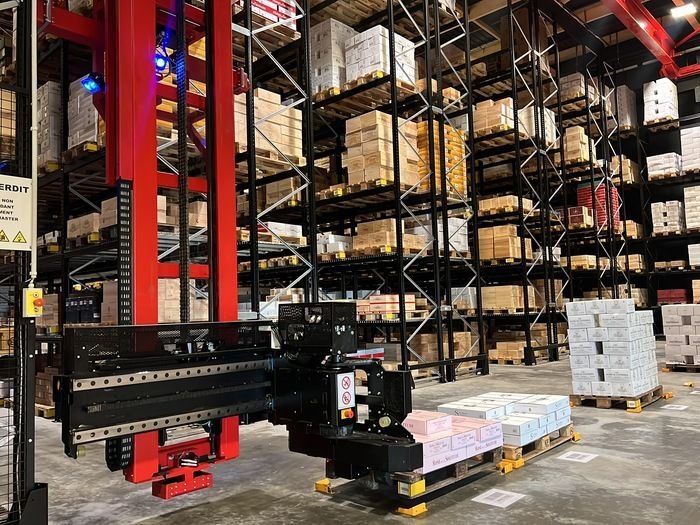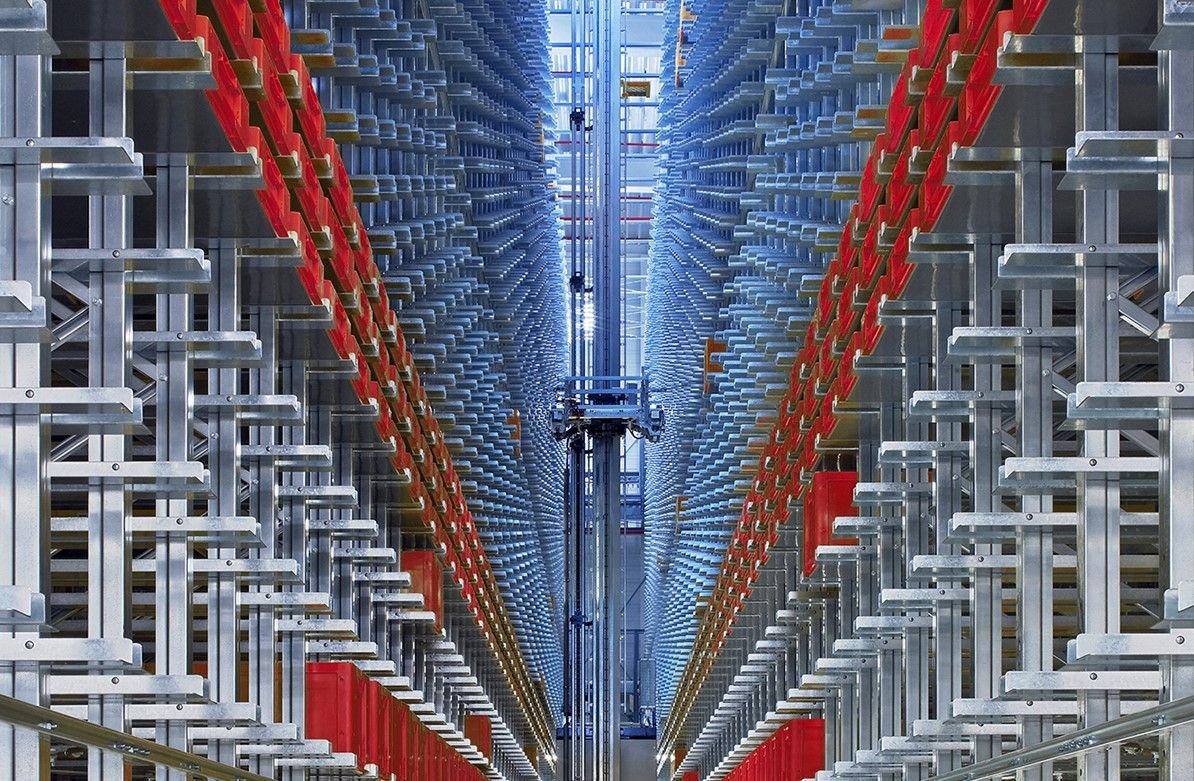What are robotic palletising systems and de-palletising
Robotic Palletising
Robotic palletising is the process of loading and arranging items on a pallet for storage, transportation, or shipment. Traditionally, this task was carried out manually, demanding labour-intensive efforts and consuming valuable time. With the invention of Robotic Palletisation, this process has undergone a transformative shift towards automation, improving speed, accuracy, and overall efficiency.
Robotic De-palletising
On the flip side, De-palletising involves the unloading and disassembling of pallets. This task is equally crucial in warehouse operations, especially during the retrieval of goods for order fulfilment or further processing. Robotic De-palletising conveyor systems simplify this process by automating the removal of items from pallets, ensuring precision and minimising the risk of damage.
Types of Palletising Robots
In the palletising process there are often varied requirements such as pallet size, load and stack height which requires different types of specialised robotic designs. Here are just a few of the main ones in use as automation solutions for the labour intensive task of palletising.
1. Articulated Robots:
These robots feature multiple rotary joints and arms, providing flexibility and dexterity in handling various palletising tasks.
Articulated robots are well-suited for high-precision applications and can adapt to changing production requirements.
2. Cartesian Robots:
Also known as gantry robots, Cartesian robots operate on a three-axis system and move in a linear fashion.
Ideal for palletising tasks involving heavy loads or when a specific, linear trajectory is required.
3. SCARA Robots:
Selective Compliance Assembly Robot Arm (SCARA) robots excel in applications where speed and precision are crucial.
These robots have a fast, horizontal arm movement, making them efficient for palletising tasks with repetitive patterns.
4. Collaborative Robotics (Cobots):
Designed to work alongside human operators, Cobots are ideal for palletising tasks that require a combination of human judgement and machine precision.
These robots enhance overall efficiency by integrating seamlessly into existing workflows.
Increasing efficiency through Robotic Palletisation
In the relentless pursuit of operational excellence, warehouses are increasingly turning to cutting-edge technologies to enhance efficiency and productivity. Among these transformative innovations, Robot palletisation stands out as a beacon of automation, fundamentally reshaping how goods are handled within storage facilities.
From the various types of Palletising Robots that offer adaptability to different tasks, to the definition of what robotic palletising is, this overview aims to give a clear understanding of automated palletisation in warehouses.
It covers the different types of palletising robots and their adaptability, the processes of palletising and de-palletising, and the tangible benefits they bring for increased efficiency.
Here are a few ways through which robotics drive warehouse automation and operational efficiency:
Speed and Precision
Robotic palletisation significantly accelerates the palletising and de-palletising processes. Robots can work at a consistent pace, 24/7, without the need for breaks or shifts.
The precision of robotic arms ensures that items are stacked uniformly and securely, minimising the risk of damage during handling.
Adaptability to Varied Products
Warehouses often deal with a diverse range of products, each with unique shapes, sizes, and weights. Robotic palletising systems are designed to adapt to these variations seamlessly. Switching between different products or pallet configurations is done with minimal downtime, enhancing overall operational flexibility.
Reduction in Labour Costs
By automating palletising and de-palletising tasks, businesses can significantly reduce their reliance on manual labour.Human workers can be redeployed to more complex tasks that require cognitive skills, contributing to a more efficient and balanced workforce thus increasing productivity.
Improved Workplace Safety
Safety is a top priority in warehouse environments. Robotic palletisation systems are equipped with advanced sensors and safety features, minimising the risk of accidents and injuries. Automated processes reduce the need for human workers to engage in physically demanding or hazardous tasks.
Enhanced Workflow Integration
Warehouse Robotics seamlessly integrates with existing warehouse management systems (WMS) and other automation technologies. This integration ensures a cohesive workflow, with real-time data exchange, leading to better decision-making and overall operational optimisation.
Conclusion
In conclusion, robotic palletisation is revolutionising warehouse processes. With the use of various palletising robots, businesses can attain unmatched efficiency, speed, and precision in goods handling and movement.
As warehouse logistics evolve, robotic palletisation is becoming crucial.
For tailored solutions in robotic palletising or warehouse automation, contact L-A-C to stay ahead in this dynamic field.


